#iso speaks
Text
Uhh hi everybody! I'm in need of some money right now so I'm opening up sketch commissions for custom shape ocs! They're $10 (US dollars) each and I accept payment through PayPal and Venmo. Please dm me on here or on Discord by the username @iso_draws if you're interested! Im accepting a shape head of your choice and a brief description of any themes or motifs for the character! Please hit me up if you're interested, thank you!
35 notes
·
View notes
Text
#scott smajor#jimmy solidarity#flower husbands#wanna guess if i had a reason for this#or if this is just iso being bored#she is speaking
134 notes
·
View notes
Text
#splatoon#splatoon 2#splatoon 3#mr grizz#mr. grizz#mr. coco#mr coco#cap'n cuttlefish#capn cuttlefish#iso padre#blinky speaks#off the bat i guarantee isopadre getting a buuuncha votes#poll#splatoon poll#tumblr polls#polls#splatoon polls
54 notes
·
View notes
Text
C — The Way It’s Written — Types
This is the first part in a possibly multi-part series of posts about the C programming language. It’s based not on common examples or what you’ll see your particular C compiler output, but on what’s written in the actual standard(s) that define the language. That being ISO/IEC 9899, in particular the 2018 revision (often named C17 or C18), however due to upcoming significant changes in the next revision (C2X), I’ll be skipping over a couple bits here and there that will be deprecated or removed by said revision, I’ll also revert to older versions if needed for special cases. All that being said, unless stated otherwise these posts are about C17. This series also assumes a baseline level familiarity with programming in general and expects you to know the general syntax style of C (if you’ve written or read and C++, Java, C#, or any similar language you’re good).
Due to the nature of C17 being an ISO/IEC document, it is not freely available for download, however the final working draft version of it is freely available, and there should be no significant changes between it and final. Link here.
Now, in what might seem like a very odd choice, we’re going to instantly skip to section 6 of the standard, not only that we’re skipping directly to 6.2.5 (page 31), because this is what defines the fundamental types of the language. Paragraphs 2, 4 and 6 are the important ones right now. From 2 we learn that the type _Bool (just bool in C2X) is at least large enough to hold the values 0 or 1 (hence its name, bool, short for boolean). Then we come to paragraph 4, which states there are 5 standard signed integer types: char, short, int, long, and long long (there’s also a statement about extended types but that can be ignored for the moment). Finally we hit paragraph 6, which simply states that all signed integer types have an unsigned equivalent that can be written by simply attaching the word unsigned to one of the types (ex. unsigned int), and that these 5 unsigned types combined with _Bool make up the set of unsigned types, and that any unsigned type takes up the same amount of storage/memory space as its corresponding signed type.
Moving back slightly to paragraph 5 we learn that signed char and char take the same amount of memory (and as such so does unsigned char), it also states that the int type should be the natural operating size of whatever machine architecture the code is being written for (so long as it satisfies a minimum value requirement). Moving forward to paragraph 9 we learn that, as you would expect, the signed types can store negative and positive values, and that the unsigned types can only store positive (or zero) values. We also learn that by definition unsigned values can not overflow, instead their value simply wraps around the range, however this is often referred to as overflow regardless.
Yet further down (paragraph 15, next page) we learn that char, signed char, and unsigned char are all different types, however char must match either char or unsigned char (the reasoning for this is that a compiler is free to choose the most efficient match for processing).
So with all that jumble out of the way what did we actually learn? Well: there exist 5 fundamental integer types: char, short, int, long, and long long, and that signed and unsigned versions of each exist, we also know there’s an unsigned type, _Bool that can represent the values 0 and 1. Together these make up the integer types of C.
Beyond integers there’s also floating point types, float, double, and long double, but those are a much more complicated subject that are outside the scope of this post. There’s also the void type, which has confusing wording that basically boils down to “you can’t use this, it represents nothing” (which is why functions with no return value have their return type marked void). And finally that you can make arrays out of these types (except void), make structure types that contain any number of these types (except void), make union types (complicated subject, think a box that can store only one type (except void) at a time), you can declare functions that return any type, you can have a pointer to any type (including void in order to represent a pointer to an unknown type), and finally that any type can be made atomic (safe for access from multiple threads).
Most of that statement can be freely ignored for now, it’s a mess that we’ll (hopefully) get into later. The important bit to know is that you can build other types out of the fundamental types.
Moving beyond that section and into 6.2.6 we learn from 6.2.6.1 Paragraphs 2-4 that objects (any type’s representation in memory basically) is made out of a continuous sequence of bytes. Moving to 6.2.6.2 we get to the representation of integer types, which is pretty much what you would expect for unsigned values (an unsigned integer of size n value bits can store 2n values from 0 to 2n-1), signed integer types in C17 list three different representations, however C2X is reducing that down to just twos’ complement (a signed integer of size n bits can store from -2n-1 to 2n-1-1, negative zeros are not possible).
So far: there exist integer types, and these store values in the expected way, but what are the range of values they must store?
Section 5.2.4.2.1 (page 20), paragraph 1 states that all implementations of the language must have the integer types be able to represent at least the values in the ranges listed below, meaning an implementation is free to expand the range if it sees fit (like how many do with int). From here we learn that a char must be at least 8 bits, and as such a signed char must be able to represent -127 (-128 in twos’ complement) to 127, and that an unsigned char is 0 to 255. Helpfully the actual (minimum) number of bits for each type is specified in a comment next to the definition. short is 16 bits/2 bytes, int is also 16 bits/2 bytes (again often expanded to 32 bits/4 bytes), long is 32 bits/4 bytes, and long long is 64 bits/8 bytes. _Bool due to its nature as a boolean type is not mentioned (actually any values placed into an object of type _Bool will become 0 if the value is 0 or 1 otherwise).
In summary: 6 types, _Bool (0 or 1), char (at least 8 bits), short (at least 16 bits), int (at least 16 bits, often 32), long (at least 32 bits), and long long (at least 64 bits).
So that’s it? For now yeah, those are the basic integer types of the C programming language, I know it was messy and weirdly formatted and confusing at times but I hope it helps understand the language a bit more, or at the very least was entertaining (even if that entertainment derived from “what the hell is this language?”). However, these complexities are part of the reason I love this language so much, everything is well defined but still variable depending on the system and compiler, there’s a reason for everything in this language ranging anywhere from “old” to “for performance reasons we can’t mandate this”, which if this series continues we’ll really get into. But for now, I hope this was enough of a taste of the standard to either make you interested in seeing more, or scare you the hell away forever. Thank you for reading and have a good time. If you have any suggestions for future parts or ways I could improve these writings please inform me. I need to go to sleep now.
#C#C programming#C programming language#Computer Science#ISO#IEC#C The Way It's Written#fingors speaks#I was about to write 'I'm sorry for this' but no. no I'm not. I liked doing this#Thanks for reading. I love you all who did and I hope you liked it
41 notes
·
View notes
Text
How do you defy your end?
a circus tent on the edge of time

you are the ringmaster and the animals and the performers all in one. a shapeshifter and a dancer. an entertainer. you have so much fun, every day and night, that you don't even know what's going on in those time locked places anymore. those who visit you speak of you like you've gone insane from having no one around to keep you company. maybe you have. does that matter though? when everything else is doomed to end and you, without question, will never end?
Tagged by: stole it
Tagging: @colecassiidy, @mercymedic @dimensionalspades (julian or leon), @byanyan @quick-drawn, and you
#smashes my head against the table#'speak of you like you've gone mad from having no one around'#god god god god god god god#cut to lena ranting to herself in the iso chamber while a team of scientists look on#( headcanon. )
3 notes
·
View notes
Text
i still need to dig through the models of the half life dreamcast prototype to document the model differences, but its such a fucking doohickey setup
#dectalk speaking#i need to get the iso. rip the dreamcast gdi. convert all of the models through a converter or else the textures will appear corrupted#and then comb through every single model to compare them to the current half life HD model pack#why yes i have an autism diagnosis how could you tell
4 notes
·
View notes
Text
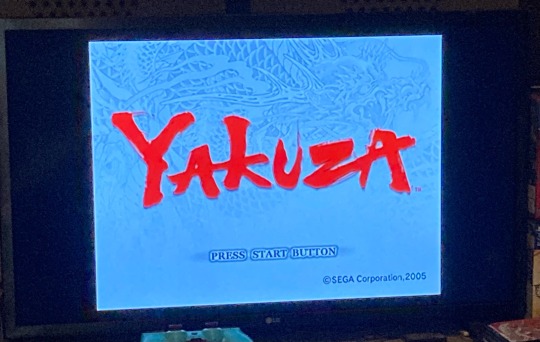




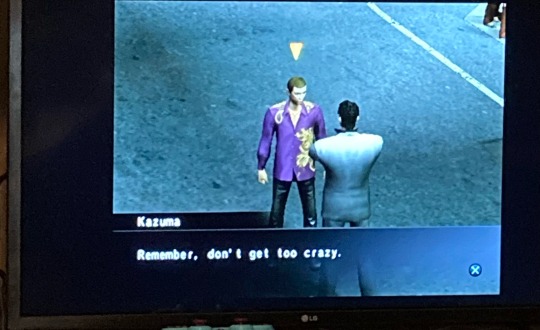
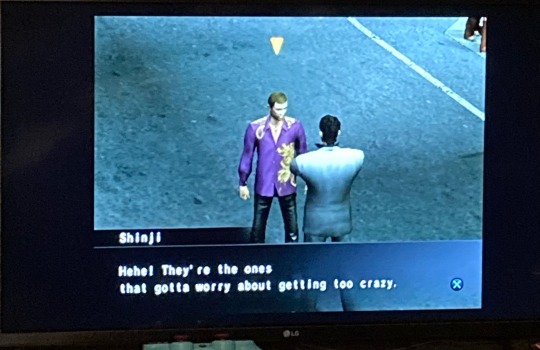
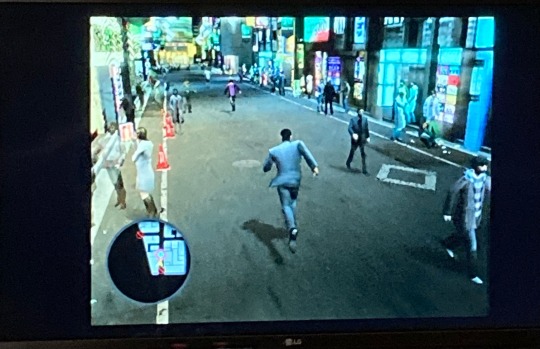
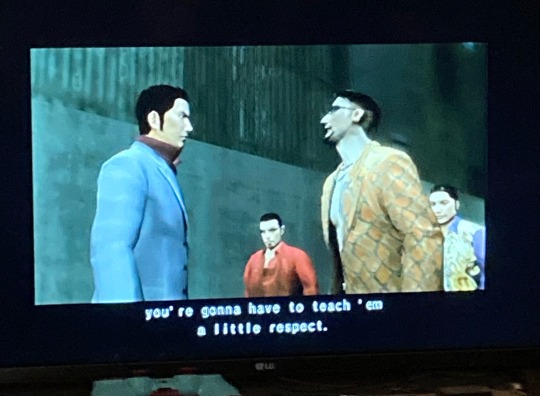

Y’all remember when I posted a while back that I’d bought Yakuza on PS2? Finally got it to run!
It’s very slow on my laptop because my laptop sucks ass, but it actually looks great and plays nicely
And the dub?
Sublime
10/10 best purchase I ever made
#yakuza#she speaks#I’m probably gonna rip the iso just to save the disc#which yeah I coulda just dl’d it to begin with#but what can I say? I’m a collector
7 notes
·
View notes
Text
how are you an outIast fan and still say unalive? say kill say fuck or else you'll die
#speak iza#not vagueing any user in particular just outIast videos comments on youtube fascinate me#saw another thread that was like the walrider literally isnt a ghost did the jungian psychology of the game over your head#the rest of the thread is them going against people saying its not that deep. im so sorry user ily but youre being 🤓d rn#id make fun of you in any other circumstance but its outIast and your mind iso beautiful i understand. lets kiss#kays shoujo romanve
3 notes
·
View notes
Text
I list of Aussie sayings that live in a very soft part of my heart;
Go, you good thing!
She’ll be right
Fang it
You beauty! (But pronounced how my grandpa Mogsy said it: you beaut-ay)
Onya mate!
Chuck a u-ey
Heaps good
Chuck a sickie
Anyway, the world is hard but I can tell my friends to chuck a u-ey and a small seed of fondness enters my body for the sheer spectacle and silliness of existing.
#straya#anyway I love idioms and slang#i speak!#the Australian existance is that of throwing our language at a wall and say she’ll be right#beloved but unmentioned: adding an O to a word to make it shorter#eg: bottle-o & iso & & smoko & your mate steveo etc etc etc#australia#aussie slang
22 notes
·
View notes
Text
me: *talking to the cat voice* hi, babygirl!! does your litterbox continue to meet all applicable iso and ansi standards?
zenobia: meow
me: glad to hear it sweetie!
#the trashcan speaks#‘meeting all applicable iso and ansi standards’ is one of my dad’s stock phrases#i taught him the way i like to fold my t shirts#and he showed me his attempts like ‘is this meeting all applicable iso and ansi standards’#her highness zenobia
21 notes
·
View notes
Text
Hey update on the comic!!
Hai!! I have not forgotten about the comic, and apologies for the long wait for batch 2! I've been super busy as for me personally I am about to graduate high-school in 2 days!! Literally the graduation ceremony is this Saturday. So apologies on the wait for the next batch of comic pages. I promise I'll have way more time to work on it once I graduate 😅. Anywho thank you all for your support! New pages should be coming soon.
8 notes
·
View notes
Text
I miss drawing (on the computer) so much I mean like I dont have time for it rn but the fact that it's not much of an option cuz my poor baby girl. I found about a different ISO called hiren cd pe thats an os on a flash w some more amenities so I can atleast check how my files are doing 🫠
#running the windows iso on the flash is kinda freaky the few times ive used it tho cuz it heats up ;; lil guy is a true fighter#meat speaks#also apperenrly theres also a repair ubuntu on a flash thats the similar as hiren :0#i the meaty part of me wants to use the cutsie ubuntu but the chain smoking trucker in me wants to use hiren cuz it seemed to have more
2 notes
·
View notes
Text
about me!
hello everyone, isolarya here! feel free to call me iso :D i am a fanfic writer and reader, as well as an original writer. writing is my longest and favourite hobby, and i love it! if you want, you can check out my writing on AO3 under isolarya!
here's a masterpost of my masterposts (so i don't clutter up my about me) that also has my au tags
i also have a sideblog for slay the princess, @chessheart
tags:
this is my life now - any irl related things (infrequent)
iso reblogs - reblogs!
she is speaking - posts that are tied to any behind the scenes stuff (posting dates, updates, asks, etc)
she answers - answering asks
ref - stuff I want saved
private - for me to find any privated posts
into my world of poetry - any poetry I write
writing stuff - anything writing related, not including fics
my writing - my fics or other prose stuff
my art - my (rare) art
inspiration - cool stuff I've found (usually prompts or ideas)
ideas - random stuff I think up for aus and fics
thoughts - non-fandom stuff that pops into my head and i feel like sharing
other stuff:
I love drama and theatre (even if I won't admit it)
my favourite genre is fantasy
I have the ability to jump into new fandoms I've never seen before (I do in fact have a story about this)
asks are welcome! (if you ask me questions about my fics or aus i will be very happy)
#this is my life now#iso reblogs#she answers#she is speaking#ref#private#into my world of poetry#writing stuff#my writing#my art#inspiration#ideas
3 notes
·
View notes
Text
at some point i should change my theme again ive thought abt changing it back to a lemon demon thing from probably 2020 but i dont remember what it looked like exactly and idt i have the header image anymore
#it was smth iso made and sent me i dont remember the lyrics it had#OH#IT WAS LYR FROM VOW OF SILENCE#and i think the theme was pink and uellow#if i ever find the header image i used then i will prob make that my theme again#might go back to soup one day too that was a good era#for now ill still be herlbert west tho ^-6#*^_^#fin speaks
6 notes
·
View notes
Text
C — The Way It’s Written — Ranks & Bytes
This is part 2 in a series of posts about the C programing language, part 1 (and series details) can be found here
Well everyone, I hope you kept your copy of the free version of the standard from last time, 'cause that thing isn't going away any time soon. To give a quick rundown on what this part is going to cover, it's going to cover the rank of integer types, and it's going to go over the definition of a byte in the language and some of its consequences.
Rank
The “integer conversion rank” (6.3.1.1 p1, page 37) is a scale (or ranking) of all the integer types from _Bool to unsigned long long (and possibly implementation defined types). The definition effectively states that all integers have some rank, that the signed and unsigned version of a type have the same rank (and char’s rank equals that of its signed and unsigned versions), that a type with a greater precision (number of bits) will always have a greater rank than a lower one, and that even if two types have the same representation (ie. same width) one will always have a greater rank. It also gives us an outline of the rank of the fundamental (called the “standard integer types” in the document) integer types: _Bool, char, short, int, long, and long long, and it also handily gives us the info that any implementation defined types (such as say __int64) has a rank less than a corresponding standard type with the same rank (such as (possibly) long long). It also states that any implementation defined types with the same precision have some ranking between each other, this is important because it establishes a total order (any integer type’s rank is either less than or greater than any other type).
So what’s the deal with ranks? Well notice the full title contains “conversion”, ranks are very important for determining integer type promotion. Any type who’s precision (and as such rank) is less than an int will be transformed into an int (if its value would fit, unsigned int otherwise) when performing an arithmetic operation (add, sub, mul, div), a shift operation, a ‘sign’ operation (negation (- operator) or the + operator), or when passed “certain argument expressions” (usually var arg functions). Note this is simply a promotion in width only, the values contained within remain completely unchanged. What this means is that adding a char to a char will in fact actually become the addition of an int and an int.
Ranks are also very important for another conversion, arithmetic operations on differing types (6.3.1.8 p1, page 39). Firstly if one of the types in the expression is a floating point type long double, double, or float) then the other type is promoted to that floating point type (you don’t want to lose the fractional part just cause you added an int after all), but after that is where rank becomes important. If the types are the same nothing happens and the expression goes on as usual, but if the types differ then the type with the lower rank is promoted to the type with the higher rank (usually, there’s a caveat about precision that basically boils down to “if promoting it would cause signed data loss, then promote both types to an unsigned version”). What’s all this mean? Well it basically means that given any two types (say int and unsigned long long) any operation between them will cause the lower rank type to become the higher rank type (here the int becomes an unsigned long long).
These results are all bound to the definition of conversion (6.3.1.3, page 38). Long story short on that if you convert a signed type to an unsigned type then the value stored will have 2n (where n is the value bit width of the new type) added to it over and over until the result falls within range of the new type, however if you convert an unsigned type to a signed type and the value can not fit within the signed type its up to the implementation what happens (since its implementation defined it must be documented somewhere). Conversion also comes into play in a few other places, like assigning values of one type to another (ex. char to int) or passing arguments to functions (ex. passing an int value to a function expecting long).
Byte(s)
Ok this one is going to be a lot simpler (and more fundamental) than ranks, I’ve only put it after type introduction and ranks because it's easier to understand that way (at least for me, sorry if you find it otherwise).
Alright let’s get the big things out of the way first, a byte is simply defined as “addressable unit of data storage large enough to hold any member of the basic character set of the execution environment” (3.6, page 4), which just means it can hold all of the basic ASCII (printable) characters excluding ‘`’ (the backtick), ‘$’ and ‘@’ as well as some control characters like new lines and such. The other big thing is that a byte is at least 8 bits (5.2.4.2.1 p1, page 20), but can be more (there have been systems with 9 bit bytes before), and also that a char (and signed and unsigned versions) are exactly one byte, no more, no less.
The other thing is that any (non-bitfield) object (an object in C is defined in section 3 and is simply the value contained within some memory location) is composed of n continuous bytes (6.2.6.1 p4, page 34), meaning that the total width of the object in bytes is n multiplied by the number of bits in a byte. It also goes on to detail that any objects with the same bit pattern (except for floating point NaN values) will compare as equal, however not all objects that compare equal need to have the same bit pattern (ex. negative 0 and ‘normal’ 0).
Further down (6.2.6.2) we learn that any integer type (except unsigned char which is only value bits) can be divided into value bits (bits that contribute to the actual value of the number) and padding bits (bits that are just there to make the integer fill the full width of a n bytes), and that there need not be any padding bits. As expected an unsigned type can store any value between 0 and 2v-1, where v is the number of value bits, and a signed type can store between (at least) -2v-1 and 2v-1-1 (due to needing a sign bit).
All other objects have n bytes contained within them, however their usage of the bits will differ greatly depending on their use, for example floating point types need to divide their bits between sign, exponent, and mantissa, and structs use their bytes to hold other types and objects.
Conclusion
So that’s it, that’s ranks and bytes in the C programming language. Ranks determine how integer types combine together, and bytes make up every object in the language and determine their value.
Thank you for reading, once again I stayed up late to write this, except it's even worse since I have something critical tomorrow. If you have any comments, concerns, or ways to improve this series drop them in the replies.
#C#C Programming#C programming language#Computer Science#ISO#IEC#C The Way It's Written#fingors speaks#God dammit man i was hoping to be able to cover bitfields in here but that would be too fucking much#AND i still don't even have ptrdiff_t or size_t explained or even mentioned#I was expecting those fuckers to be brought up and settled in the FIRST post#At this rate we won't get to them for another hot minute#(Sorry for excluding bitfields Julia but I doubt you'll even see this one)#Thanks for reading everyone#I love you#If you actually followed me because of this series#congrats#and uh i hope you enjoy the other inane shit i post on my blog
5 notes
·
View notes
Text
I was thinking about this a while back when I was just getting into MGS but I’m remembering it again now that I’m thinking about Splatoon… if you really don’t think about it Raiden is just like Agent 8.
Has amnesia
Test subject
Raised in/for the military
Dragged around to do tasks by an unreliable and malevolent guide
Nadir of their story involves being stuck in the digestive system of a giant mecha and having to sneak around while totally vulnerable with no equipment
Impractical skintight outfit
#wg speaks#‘have you—‘ yes of course ive thought about an au where Octo Expansion is MGS2#like obviously snake is agent 3 and raiden is agent 8#rose is a pink see-through fantasia and a passenger on the subway#she mechanically takes the role of iso padre#i dont know what otacon is but he’s the one running the chatroom and doing the other Computers stuff
4 notes
·
View notes